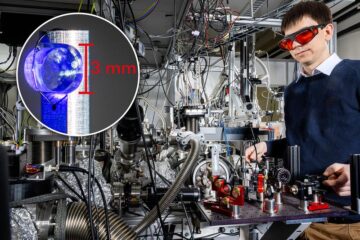From the Sewer to the Sound: Researchers Examining Effects of Household Titanium Dioxide Nanoparticles on Marine Ecosystems

They view the slime, or biofilm, as a complex community that may hold the key to informing humanity of the true environmental impact of the chemical nanoparticles that find their way from area kitchens, baths and garages into Long Island Sound.
One such controversial compound is titanium dioxide, which is used to whiten and brighten a multitude of products, including candy, cosmetics, toothpaste and paint.
The underlying premise for testing the effects of titanium dioxide nanoparticles on biofilms is simple: when some chemicals are in nanoparticle form—ranging in size from 1/100th to 1/1000th of a human hair—they become bioactive, degrading and passing through cell membranes. Noting that “large” particles of titanium dioxide are considered safe by the FDA, Ciston and Reardon are interested in how nanoparticles of titanium dioxode affect marine ecosystems, particularly in terms of the humble biofilm. Reardon explains that while marine biofilms can be a bother, they are critical players in the oceanic environment. In addition to transforming nitrogen and carbon in ways that positively impact the greater food web, biofilms clean waste water by eating harmful organic matter and can even be used to clean oil and gasoline spills through bioremediation.
This fall, Reardon is continuing the biofilm research she began during her Summer Undergraduate Research Fellowship (SURF) at UNH. Reardon and her SURF advisor, Ciston, are collecting biofilm samples from a pier in West Haven, Connecticut, and Port Jefferson, Long Island, using a substrate system Reardon designed. Reardon harvests the biofilm that naturally attaches to the microscope slides in the submerged substrate and then heads to either the UNH lab or the State University of New York at Stony Brook, where fellow researchers are sharing their lab space and expertise. In the lab, Reardon stains the biofilm bacteria with fluorescent nucleic acid and, using digital image analysis, collects data on the depth and biomass of her test subjects. She also uses optical microscopy and scanning electron microscopy to identify characteristics of the biofilm structure and to identify the organisms.
Reardon and Ciston “dose” the samples with a composite material made of carbon nanotubes and titanium dioxide nanoparticles. Ultimately, they will compare the dosed biofilm with the untreated samples, determine how the microorganisms were affected and look at the greater implications for Long Island Sound.
As a chemical engineer with an environmental engineering background, Ciston notes she is fascinated by titanium dioxide and has been studying it, and its effects on organisms, for several years. She notes that titanium oxide is included in many cosmetic preparations to reflect light away from the skin and, as a pigment, is used to enhance the white color of certain foods, including dairy products and candy. It also brightens toothpaste and some medications, is used as a food additive and flavor enhancer, and used in paints for cars, boats, and airplanes.
A leader in experiential education, the University of New Haven provides its students with a valuable combination of solid liberal arts and real-world, hands-on professional training. Founded in 1920, UNH is a private, top-tier comprehensive university with an 80-acre main campus. The University has an enrollment of more than 5,900: approximately 1,700 graduate students and more than 4,200 undergraduates, 70 percent of whom reside in university housing. The University offers more than 80 undergraduate degrees and more than 25 graduate degrees through the College of Arts and Sciences, College of Business, the Henry C. Lee College of Criminal Justice and Forensic Sciences, the Tagliatela College of Engineering and University College. University of New Haven students study abroad through a variety of distinctive programs.
Media Contact
More Information:
http://www.newhaven.eduAll latest news from the category: Ecology, The Environment and Conservation
This complex theme deals primarily with interactions between organisms and the environmental factors that impact them, but to a greater extent between individual inanimate environmental factors.
innovations-report offers informative reports and articles on topics such as climate protection, landscape conservation, ecological systems, wildlife and nature parks and ecosystem efficiency and balance.
Newest articles

Biomarkers identified for successful treatment of bone marrow tumours
CAR T cell therapy has proven effective in treating various haematological cancers. However, not all patients respond equally well to treatment. In a recent clinical study, researchers from the University…

She deciphers how tomato roots communicate
Ora Hazak has always been fascinated by plants and is studying the signals that roots send to the rest of the organism. She aims to understand this communication in order…

Laser excitation of a nucleus
A long-awaited breakthrough opens the door to a new type of atomic clock and the investigation of fundamental questions in physics. After decades of investigation, researchers made an extraordinary quantum…





















